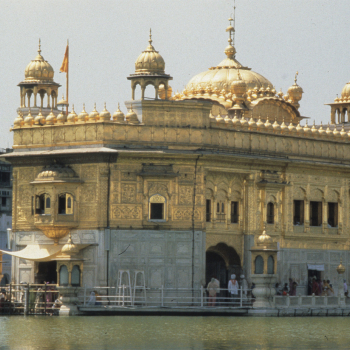Education in arts and sciences was often directed by religious institutions in the Middle Ages. Mosques, maktabs (elementary religious schools) and madrasas (secondary religious schools) were essential in the education of children in the medieval Caliphate, and monasteries fulfilled a similar role in Tibet after the arrival of Buddhism in the 7th century.
Between the eighth and fifteenth centuries, philosophy and logic underwent a number of extremely important developments. This was a period of innovation, as illustrated by the emergence of Sufism in the eighth century and Illuminisationism in the twelfth century. Currents of philosophical thought took form in the melting pot of West Asian cultures that had been combined under the Islamic Caliphate, and philosophical ‘commentaries’ appeared, many of which made new and important contributions to philosophical thought.
Medical science and the study of pharmacology saw great developments in Central Asia in the Middle Ages. The growth of scholasticism encouraged the study of science, and was enriched by the variety of cultural influences from pre-Islamic societies that shaped the Caliphate, notably scientific works in Persian. China, India and Tibet all played a large part in the development of medical theories and medicines themselves, and veterinary science had emerged as another branch of scientific knowledge by the 15th century.
The development of astronomy by scientists in the Levant and Iran in the Middle Ages was in fact highly influenced by pre-Islamic Persian and Indian cultures. Ancient Greek astronomical texts were, in turn, a valuable base from which all Central Asian scientists worked. Technological advances made a greater understanding of the universe possible, especially from the ninth century, when the astrolabe and the sextant were developed.
The fifth to the first centuries BC saw a gradual process of social change amongst the tribes of Central Asia, with the intensification of farming economies developing hand-in-hand with the settlement of tribes into sedentary communities. The Aral and Syr Darya region of northern Central Asia was a point at which sedentary southern cultures met nomadic northern tribes, and as such, has been a melting pot of technological developments, in irrigation, agriculture, mining and manufacture.
Archaeological excavations in India and Pakistan have revealed evidence of substantial technological developments from the Iron Age. Between the period 1,100 and 800 BC, the Painted Grey Ware Culture emerged in this region, including not only the distinctive painted pottery after which the culture has been named by archaeologists, but also a wide range of tools and craftworks in ceramics, iron, copper, glass and bone.
Situated between the Red Sea and the Dead Sea and inhabited since prehistoric times, the rock-cut capital city of the Nabateans, became during Hellenistic and Roman times a major caravan centre for the incense of Arabia, the silks of China and the spices of India, a crossroads between Arabia, Egypt and Syria-Phoenicia. Petra is half-built, half-carved into the rock, and is surrounded by mountains riddled with passages and gorges.
Basant Kite Flying Festival
The people in Pakistan celebrate the Basant Kite Flying Festival with great pomp and show. The celebration takes place in the spring season. The beauty of the nature in the spring season adds to the festival it is a celebration of the starting of the season that is celebrated by flying colorful kites in the sky. The kites are of different size and shapes, some of them also carry special messages that are written to God. People write their wishes, prayers and also regards to their God on the kite and make it fly high in the sky.






